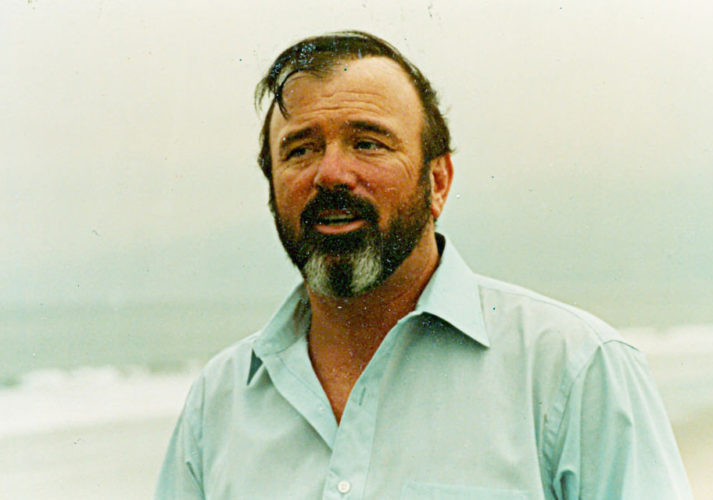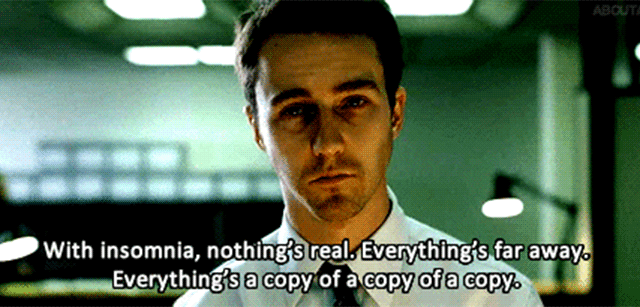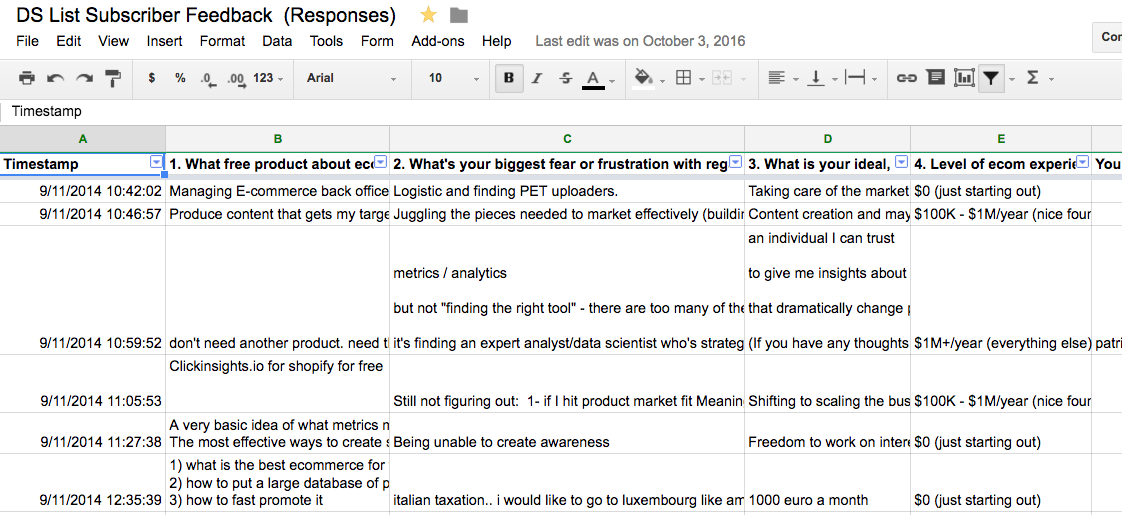“I, myself, only want one advantage and, if you will give it to me, I will whip the pants off of all of you when it comes to selling burgers!”
“What advantage do you want?” they ask.
“The only advantage I want,” I reply, “is A STARVING CROWD!”
— the late great Gary Halbert
Gary Halbert was one of the best copywriters ever. And yet when asked what the #1 predictor of success was, he didn’t say effective sales copy.
He didn’t say the ideal call to action.
He didn’t even say the perfect product.
No, he went straight to the customer. He argued that the biggest predictor of success is having potential customers with problems. “Starving people.”

For the last few emails, I’ve been talking about building lifestyle businesses. Profitable, stress-free businesses that free up your time and throw off cash.
If this is your goal (and it should be), you need to get clear on the problem you are solving first. Physical products, digital products, software, or services — it doesn’t matter.
You need to be clear on the problem if you want growth.
Marketing is matching
Too many entrepreneurs ignore this reality. They ignore the problem, the demand.
Even worse, they think/hope/dream that if they just create a killer product, the sales are sure to come!
In essence, they are betting that they can create customer demand.
That’s too tall a task.
I’m not sure where we got this impression that we could create demand. If that were possible, New Coke would have caught on. In my 20s, I’d have dated supermodel after supermodel. And we all would have seen all these movies.
When a product succeeds, it’s not because it creates demand. It’s because it taps into pre-existing demand. A pre-existing problem.
So you have to start with the problem.
A couple examples. When I first had my son, there were nights he would wake me at 2AM, screaming. I’d get up to soothe him. I’d start bouncing on the inflatable ball, singing “You are my sunshine”, thinking I’d be back to bed in 30 min.
Six hours later, we would both still be up. My legs would be weak from the bouncing and bouncing. I would be hoarse because I sang the effing song 1000 times.

On nights like that, I had a major problem. I can remember saying to my wife at one point “I would pay $10,000 right now to be able to sleep again.”
Talk about a starving crowd — I was famished!
And low and behold, a sleep consultant marketed her way into my life and solved my problem (for a whopping $200 . . . best money I’ve ever spent, BTW).
Ten years prior, I was running a drop-ship retailer. We shipped multiple products from multiple warehouses (standard for a drop-shipper). For ten hours a week, we copied and pasted order information from our shopping cart to our fulfillment system to our accounting system.
Not quite sleeplessness, but still an incredible pain in the ass — again, a starving crowd.
So my business partner created Duoplane.com — software that automates the drop-shipping process. And for us and many other drop-shippers, it solved the pre-existing problem.
Your job as an entrepreneur and marketer is not to turn a “no” into a “yes.” It’s to find the “yes” out there and match a solution to it.
Make your life easy.
But what about fashion and design ?
“But Drew, what about fashion and design products? What’s the ‘problem’ there that they are solving?”
Having marketed both fashion and design in the past, I assure you: customer problems exist in those categories too.
They aren’t as acute, but they exist.
When people buy an Eames lounge, it’s not because they need something to sit on. It’s because they want to tell the world how cool they are.

A problem is still there. Self-identity. Belonging. Image.
If you want to grow, get clear on your customer problem ASAP
I work with a lot of companies in which growth has stopped. Karmaloop had gone bankrupt. Design Public plateaued for several years.
This slow-down is often because the company is not clear on the problem it is solving.

This can take a few different forms:
- The company has no idea what problem it is solving. A year ago I worked with a SAAS company. I spent time with the marketing team. They gave me a clear definition of their core customer and her primary problem. The issue? When I presented this data to the CEO, he had a completely different customer in mind. The developers? They just wanted to play Call of Duty. It was not a surprise that their marketing message was watered-down and not resonating with anyone.
- The company doesn’t realize that the core problem has changed. At Design Public, the initial problem we solved was “limited access.” In 2003, most people had to go to an elite showroom to buy high-design home goods. And these showrooms only existed in major cities. Design Public made it possible for any design fan in the country to order these products. But by 2007, no fewer than ten online competitors had solved the “limited access” problem. It no longer existed. But nobody gave us the memo. Our growth slowed. It was only once we identified a new problem — “unearthing the cutting edge new stuff” — that we jump started our revenue engine.
- The company is so focused on one problem that it misses a separate bigger problem. SAAS entrepreneurs want analytics. So Patrick Campbell built Profitwell to give it to them. But in so doing, Patrick was able to identify a much bigger problem. Customers only wanted the analytics so they could reduce churn — that was the bigger problem. So he pivoted Profitwell into a new offering called Retain that has done even better.
How you can get clear on the problem
If you fall into one of these three buckets, you should get clear on the problem. Now.
Here’s an approach that I like to use:
Talk to customers (duh)

If you are like me, you want to come into the office, turn on your Mac, and never, ever talk to a customer. But you gotta get over that anti-social behavior.
Your goal is to start formulating a list of the top problems that your customers have. At Teamwork, a SAAS company where I am running marketing, we have a “day in customer support” policy. It forces everyone on the team to get closer to the customer.
But not every customer will let you know their issues — they will just churn. To prevent this, we also do a fair amount of call outreach to our top customers. On those calls, we ask one question: why’d you choose us?
Conduct online research
Asking current customers is one thing, but it may not reveal other problems that exist in the marketplace.
To unearth these, I recommend turning to places like forums, reviews sites (for software), and Amazon listings (for physical products). Take this listing for the Magic Bullet blender, for example. I can see from a quick scan there that a major customer problem is not just blending, but blending ice. This insight might drive all their marketing and product development.

Leverage marketing automation

Using your email software and a few Google forms, you can create a nice automated feedback collection machine. Take Nerd Marketing, for example. There I have a nice little engine running:
- When new visitors subscribe to my list, I ask them what is driving them using this survey
- If they then buy a product from me, I am sure to ask whether it solved their problem with this survey
- If they view a product page but don’t buy the product — I send them this survey asking why (BTW, these survey results are GOLD)
- Record everything. You want to write down every customer problem that you identify. Not just the issue itself, but the language people use to describe it. Why? Because you should reflect this language in your marketing. The nice thing about Google Forms is that all the results go into a spreadsheet. At Nerd Marketing, I collect all my form responses into a spreadsheet like this one below. This allows me to process, categorize, and rank customer problems.
Your life, easier

Once you’ve done this work, your life will become much easier.
You will know what features to highlight or build into your product.
You will know how to write your sales letters. In fact, your sales copy will write itself.
This blog is about smart marketing. It’s about doing the absolute least to get the absolute greatest results.
If you’re an aspiring lifestyle entrepreneur, your time is your most precious commodity. So don’t waste it working on your website, your product, your damn business cards, or your damn brand.
Instead, invest it in getting a crystal clear idea of what problem you are solving.

